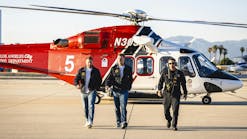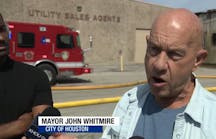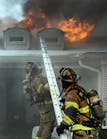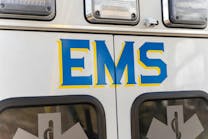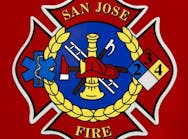One of the most difficult things about becoming an officer in a small town fire department is realizing that not only do you have to show up for the drills but that you also have to plan them. This is not a bad thing, as a good drill is a learning experience for the person running it as well as the people doing it. Still, it can be a daunting task, especially in a tightly run department such as the New Milford, NJ, Fire Department, which has a very good reputation in the area, and very high expectations of its members. Drills also take on extra value in a quiet town where working fires come few and far between.
So upon being elected lieutenant, I began to scrounge around for drill ideas. Not the big, multi-hour drills mind you, those were the province of the chiefs, nor the department wide drills, which, in New Milford, are often run by a committee of ex-chiefs. My specialty was going to be the Sunday morning drill, the drill for members who showed up for breakfast and who did not want to spend the entire day at the firehouse.
The drills had to be relevant, they had to be to the point and, let's face it, had to be entertaining. These were not to be the mandated drills, whose percentages were carefully calculated and applied towards membership status, but instead were extra drills, ones that a member could miss without penalty. So if I wanted the members to work, they had to want to be there. My motto became "One skill, one drill, one hour." Resources were available: Going to Amazon.com and typing in "firefighting drills" gave me several excellent texts, as did a general search of the internet using the same phrase, including the website you are now visiting.
Firefighter One textbooks have sections on firefighting skills that can easily be worked up into drills, especially the excellent Delmar text. Another valuable resource that should not be overlooked is the members themselves. They know what works, and what doesn't, and many are only too eager to let you know which is which.
The firefighters who seem to complain all the time are all too easy to ignore, but often they are speaking the truth. Rather than tuning them out as complainers and whiners, a more valuable approach is to look past the tone to the substance. What also worked for me was simply exploring the engine, looking into compartments for tools and equipment that, in a small town, are rarely needed, but, when needed, are needed badly. Do it someday; you will be surprised at the amount of equipment you can remember using, just not in a long time. Thinking of ways to reintroduce the members to this rarely used equipment has given me several valuable drill ideas, which I hope to share with you in the coming months.
As for making them entertaining, I decided to make them competitive, forming teams and timing the drill. Nothing makes firefighters happier than a chance to talk trash to other firefighters.
Drill # 1: The Adaptor Drill
Objective: To teach how to attach hoses and nozzles of different diameter into one working hose length.
Equipment needed
- A watch with a second hand or a stopwatch
- One engine
- 2 lengths of 1 3/4-inch hose
- 2 lengths of 2 1/2-inch hose
Setup: 10 minutes.
Arrange the four lengths of hose so that male ends cross over male ends and female ends cross over female ends. Alternate 1 3/4-inch and 2 1/2-inch lengths of hose. Have a male end of the 1 3/4-inch hose adjacent to the engine outlet. At the end place a nozzle you rarely use. I used a small Rockwood Navy nozzle with a piercing applicator next to a 2 1/2 female end. Extra hose lengths can be added to increase the complexity of the drill, but be sure you don't have more hose than you have adaptors to couple them together.
Instructor's notes: This drill can be run in house or on the apron. The members will be divided into two person teams. Each team will be timed as to how long it takes them to join all the different lengths and nozzle into one working hose length. The hose must be coupled to the coupling adjacent to it using adaptors stored on the engine. When a team is done they can rearrange the hoses into whatever pattern they think will baffle the team behind them, and must return the adaptors to there original positions on the engine. While they are doing this rearranging, the next team must be out of sight of the hoses. The team with the longest time must put the equipment away. The drill went well and it took about 45 minutes from beginning to end to run 10 firefighters through it.
Results: The losing team cleaned up with no complaint and with my help, since no officer should be sitting while his men are working. The next time I run this drill I plan to hide some of the adaptors just to add to the fun, and encourage the men to look for adaptors in places they don't normally look. When was the last time in your small town fire department you actually broke down a break down nozzle?
Drill # 2: Adding a length to a working hose line
Motivation: Adding a length of hose to a working hose line is not something that is done very often, but when it needs to be done, it must be done just as fast as possible. It is something that always must be done at the worst possible times, and should be practiced frequently.
Objective: To add an additional length of hose to a working hose line.
Equipment needed
- A watch with a second hand or a stopwatch.
- One engine, with three lengths of spare hose, if you do not wish to stretch the speed lay, or the speed lay if you don't mind repacking it.
- One nozzle
Setup: Tie into a hydrant on a street that you can close for an hour, and attach two lengths of hose to the engine. Begin flowing water. At a signal to the pump operator, have two firefighter attach a third length of hose in the fastest possible manner. Experiment to find which is the fastest method.
Instructor's notes: The team on the nozzle should be given time to practice advancing and backing up with the hose. Have them advance it on their knees just for practice. Don't be in a hurry to add the extra hose; flow water for a while. In a small town department hose teams need all the practice they can get.
When it is time to add the hose, have the acting officer radio the message back to the pump operator, and start timing.
A two-person team will have to stop the water flow and add a length of hose in the smallest amount of time. When water flow resumes, stop timing. The teams will then switch positions until every team has worked the hose line and added the extra length.
Results: Two techniques were tried. The first involved using the hose clamp (and how often do you drill with that piece of equipment?) midway between two couplings as close to the nozzle as possible, and breaking the hose to add the extra length. The second technique involved stretching the extra length from the engine itself, disconnecting the working hose from the engine, and attaching it to the extra length. Of the two methods, the first was much faster and, all agreed, much easier. When the hose is added at the start of the working length, it was found that the weight of the still very full hose made it difficult to maneuver onto the new length. In addition, the nozzle crew had to pull a lot of hose before the new length was stretched, whereas in the first method, where the extra length was closer to the nozzle, the hose between it and the engine had already been stretched, and was not acting as deadweight.
One question you should ask your crew (and it is always best to elicit the answers rather than just give the answers) is "When should you start thinking about adding hose lengths?" At any structure fire involving large or set back buildings, it should be on your mind. At any garden apartment complex fire with deep courtyards, or any fire where you find yourself using 50 feet of hose just to reach the building you should be thinking it. Ideally, an alert pump operator or officer will be thinking of adding extra hose before the first hose is stretched. When in doubt, add hose.
Related:- One Skill, One Drill, One Hour: Quick In-House Training Ideas
- One Skill, One Drill, One Hour: Quick SCBA Confidence Course
To submit your department's drill ideas, please e-mail Peter Matthews, Firehouse.com's Content Manager.
